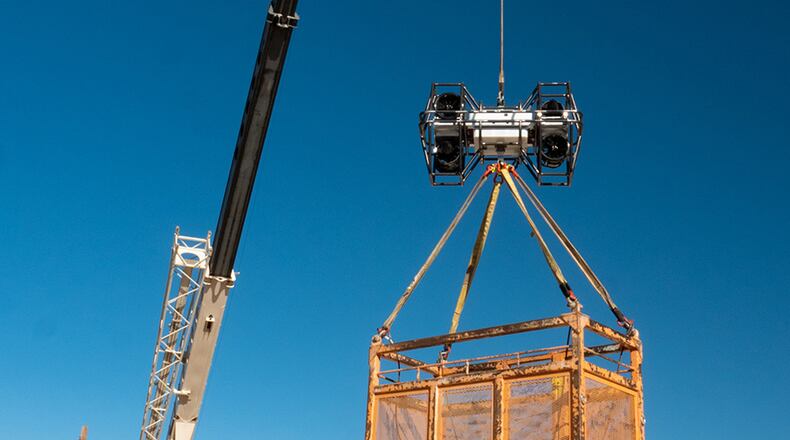The company pitched this new technology at an Air Force contracting sprint in October 2018, which sought to identify game-changing technologies and award a number of initial contracts in a matter of hours.
The contracting sprint was a combined effort of the Air Force Research Laboratory, the Air Force’s Small Business Innovation Research program and AFWERX, with participation from a number of other Air Force organizations.
The company received a Phase I contract award from that sprint, and the rapid progress and rapid results from that Phase I contract earned the company a Phase II contract award March 2019, as well as additional private funding.
Vita Inclinata’s Load Stability System is now in three lines of development, which are the litter attachment, hoist rescue and sling load versions.
The litter attachment line of development stabilizes patients in a rescue litter attachment being lifted into helicopters for medical evacuation. The second line of development is the hoist rescue, for cargo loads up to 1,000 pounds, lifted by helicopter or crane.
The third line of development is the sling load, directionally controlling a 20,000-pound load in up to 60 knot winds, for helicopter cargo operations and use by cranes at construction and oil sites. This sling load completed a successful test on a crane Nov. 25. The system will bring safety and efficiency to helicopter sling load operations and cranes on construction sites and oil rigs, according to company officials.
In the construction and oil markets, load sway makes crane operations dangerous as it often causes the load to pinch a crew member between the load and part of the oil rig or work site. The current method to mitigate this unfortunate workplace danger is to use a tag line or a push-pull stick; both methods put the load handlers in harm’s way and require workers to physically touch the load to stop the swinging.
The sling load system is the first hands-free method of mitigating the load sway and the only method that allows the load handlers to remain within the safety zone throughout the duration of the lift.
“This thing is really neat and very helpful, and I can definitely see a market for it,” said Andrew Philips, an operator from Erix Crane and Rigging, which conducted the initial test.
The sling load system is already in high demand and is on contract to be piloted with the Colorado National Guard in 2020 for large load stabilization of helicopter sling load missions.
“It is amazing to see what a group of young innovators, engineers and staff can accomplish in such a short time. Less than one year ago, Vita had a little box with fans to validate an idea; now Vita has a product” said Caleb Carr, CEO and president of Vita Inclinata Technologies.
With the release of the sling load, Vita is already receiving dozens of pre-orders and delivery slots are quickly filling up, according to the company, he added.
Meanwhile, the litter attachment version of this system will be demonstrated at the HeliExpo 2020 next month. The litter attachment has orders for delivery to two Air Force Combat Rescue squadrons, by the second quarter of 2020.
About the Author
